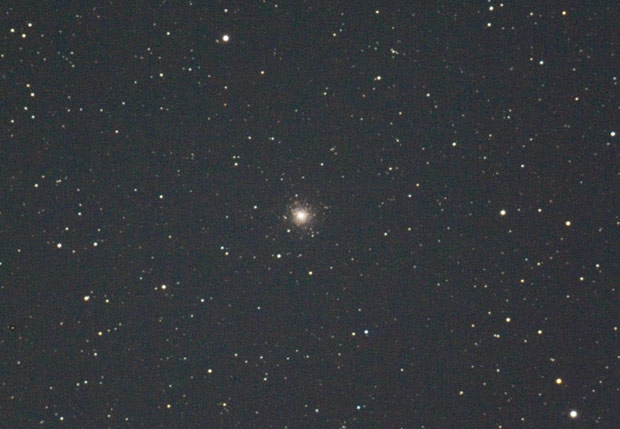| M75 (NGC6864) / Globular Cluster, type I |
|---|
| R.A. | 20h 06m 6.0s (2000.0) |
|---|
| Dec. | -21° 55' 00" (2000.0) |
|---|
| Apparent Size | 1.9' |
|---|
| Real Size | 50 light yrs. |
|---|
| Magnitude | 8.0 |
|---|
| Distance | 79,000 light yrs. |
|---|
Around the eastern edge of Sagittarius, M75 is very small-scaled globular cluster near the border to Capricornus.
Actually it's fairly troublesome to search the tiny deep sky object because there are few bright stars suitable for a road sign around this star field.
You can use no ways except about 13.5 degrees ENE of tau Sgr, or about 8 degrees SSW of beta Cap.
M75 has the highest density class of type I, so the cluster don't show individual stars in central region even if you see the cluster with large-scaled telescopes.
The cluster has a visual size of only 2 arc minutes or so, one of the poorest Messier's objects.
But it's natural that it should have turned out that way, to say, M75 is estimated about 79 thousand light years away,
it's the most distant Messier's object in all inner galactic.
The cluster is lying at the far side of the Galaxy beyond the central bulge region.
|

